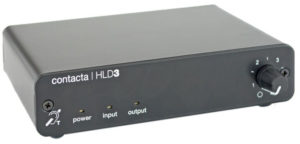by Neil Bauman, Ph.D.
A man asked,
Our HLAA [Hearing Loss Association of America] chapter needs reliable information on how to access remote real-time captioning (CART) for our meetings. Can you help us with the specifics?
Sure. Remote CART displays the same real-time captioning you’d see if the captionist was present. The basic difference is that with remote CART the captionist is elsewhere in the world, not physically present in the same room with you. You are connected with her (most captionists are women) via the Internet.
Typically, remote CART is cheaper as there is no traveling time for the captionist, and there is no 2 hour minimum. You just schedule the amount of time you need.
In order to access remote CART you just need five things:
- An Internet connection (faster is better)
- A computer that can access this Internet connection
- A microphone hooked up to the computer to capture the speaker’s voice
- A projector hooked up to the computer to project the captioning onto a big screen for all to read
- The appropriate software or web address used by the captionist (Your captionist will give you this and your username and password.)
Here’s how it works out in practice.
First, you have to contact your remote CART provider and schedule your time slot. Do this well ahead of time. At our HLAA chapter, we do this a year at a time since we know when our meetings will be. That way we guarantee our time slot won’t get taken by someone else.
At the appointed time you hook up the above devices and log on to the web site.
Set up the projector so whatever appears on the computer screen is projected to the big screen at the front. (Incidentally, you can ask to have the font size changed to something that is easy for your people to read. Also, you can request FULL CAPITALS or normal lower case letters—whatever you find the easiest to read. Personally, I like lower case.)
Next do a microphone check to be sure your captioner can hear you well. (Remember, she can only caption what she hears and understands.) Now you’re ready to go.
Where we have our HLAA meetings, they have their own “in house” sound system. We have our speakers wear the “house” wireless microphone that is hooked into their sound system. The output of the house system is plugged into the computer’s microphone or line input jack, as well as feeding the public address system.
If you’re curious, here’s how it all works. The speaker’s voice goes into the microphone to the computer. From there it travels via the Internet to the captionist’s computer where she listens on her speakers or headphones. She types what she hears into her steno machine that is hooked up to her computer. Her computer converts the “gibberish” she types into proper English text which appears on her monitor.
This text is automatically sent to the web page you are connected to, and thus is displayed on your computer’s monitor, and at the same time projected on to the big screen where everyone can see it as fast as she types it—typically only 2 or 3 seconds after the speaker has spoken the words. Its just like magic!



Leave a Reply